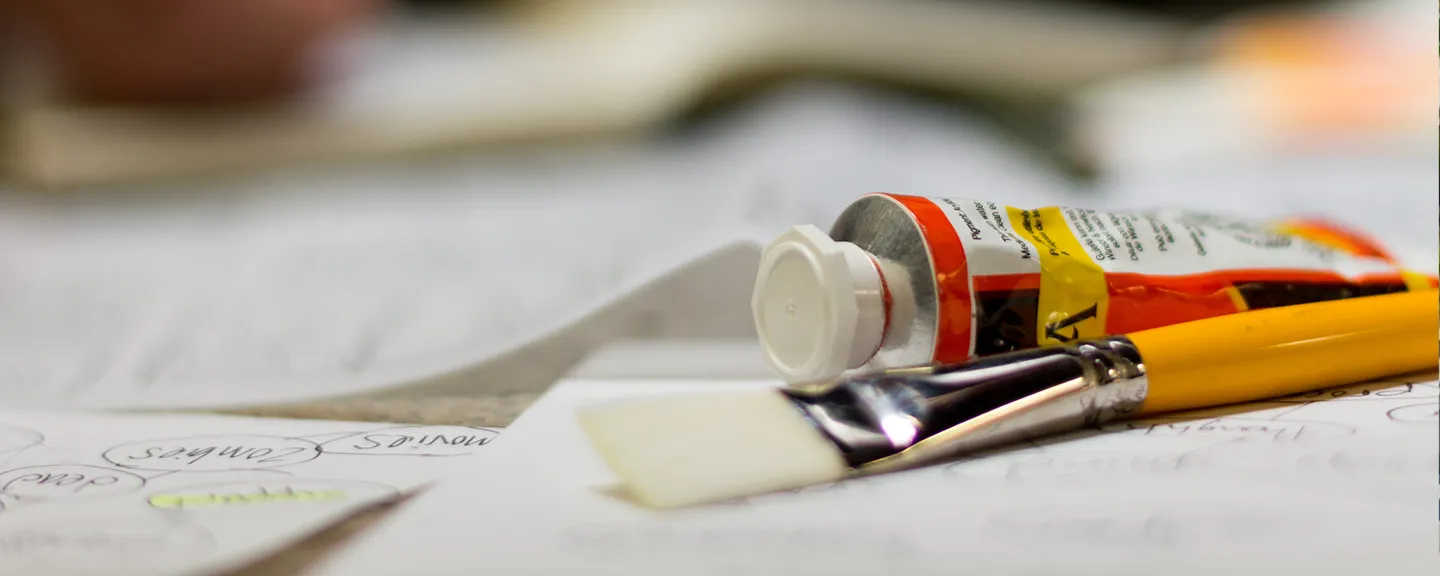- Home
- >
- APU Articles
- >
- News Article
Tips for Preparing Your MFA Portfolio
April 14, 2020 | Written By Tobin Perry

MFA programs are looking for students with a passion for their subject matters and their mediums. One of the most important ways to understand the passion of potential students is to see their work—and to read about how they’re engaging the art.
Here’s what to know if you’re looking to strengthen your portfolio and apply to an MFA program.
What Is an MFA Portfolio?
Simply put, portfolios include samples of your artwork in whatever medium you use. They also typically include an explanation about how you have approached these particular pieces of art.
Every institution will define the portfolio requirements they want to see from an applicant, but there are a few expectations that tend to be pervasive in all MFA experiences. Of course, your portfolio should be able to represent both the quality and breadth of your work as an artist.
How to Make the Most of Your Portfolio
Understanding the portfolio requirements is the first step toward applying. Requests can vary depending upon the school and the specific discipline within the school for which you’re applying, so it’s important to understand what elements you need to satisfy. Sometimes you’ll find the requirements listed on the school website. Other times you’ll have to call the school and ask.
Next, make sure you get some other opinions on your work. Consider asking your undergraduate art professors if they wouldn’t mind reviewing your portfolio. In some regions, you can even seek out National Portfolio Day events, where graduate school fine arts faculty will look at your portfolio and offer constructive critiques.
Finally, don’t be afraid to take risks. Fine arts programs are typically looking for students who have begun to establish their creative identity but are open to exploring and developing further.
Key Considerations for Creating Your Portfolio
As you prepare your MFA portfolio, there are a few other things to keep in mind. Here are three tips that can help you along the way:
- Include your best pieces. This should be obvious, but don’t let a fear of failure keep you from showing the very best works in your portfolio. Those judging your portfolio want to see the pieces that excite you and express your artistic skill set.
- Sprinkle in a variety of work. You’ll want to show reviewers that you’re interested in learning. One way you can do this is by demonstrating an interest in experimentation and an openness to evolving as an artist.
-
Present your artwork with care. High-quality, well-lit photos are critical for how your portfolio is judged. Reviewers often see images that are poorly lit and out of focus, which makes it difficult to properly evaluate the work and can ultimately affect the outcome of your application. If the scale of a piece is important, consider including an object or person in the photo to help reviewers understand its dimensions.
Many people who apply to a Master of Fine Arts (MFA) program worry that their portfolio isn't strong enough. However, these concerns are often unfounded. The best way to know if your portfolio is ready is to apply. Unfortunately, many artists miss out on opportunities simply because they don't apply.
Are you interested in pursuing an MFA in Visual Art at Azusa Pacific University? Check out the school’s School of the Arts for more information.